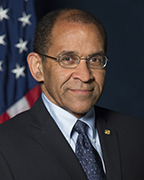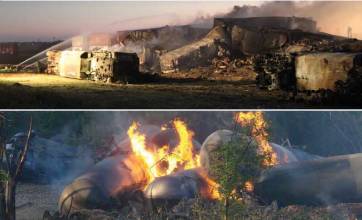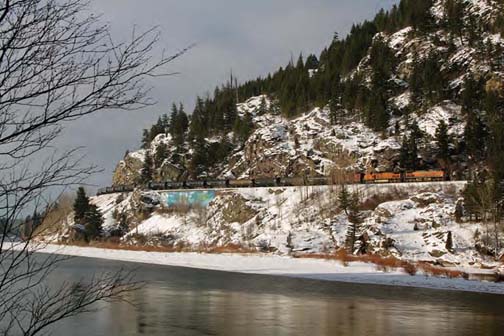 NTSB Chairman Christopher Hart
NTSB Chairman Christopher HartOnce again, the National Transportation Safety Board (NTSB) has recommended GPS-aided positive train control (PTC) as one of its “most wanted” transportation safety improvements in 2016. But the agency, which has been advocating for PTC for more than 45 years, appears to be fighting an uphill battle against Congress and the railroad industry.
Once again, the National Transportation Safety Board (NTSB) has recommended GPS-aided positive train control (PTC) as one of its “most wanted” transportation safety improvements in 2016. But the agency, which has been advocating for PTC for more than 45 years, appears to be fighting an uphill battle against Congress and the railroad industry.
In unveiling of this year’s wish list during a press conference at the Transportation Research Board’s Annual Meeting in Washington, D.C., yesterday (January 13, 2015), NTSB Chairman Christopher Hart lamented the industry’s failure to meet a December 2015 deadline set seven years ago for implementation of PTC on the nation’s rail system.
“As a result, much of our rail infrastructure remains unprotected by PTC,” Hart said. “Every PTC-preventable accident, death, and injury on tracks and trains affected by the law will be a direct result of the missed 2015 deadline.”
The NTSB investigates transportation accidents, determines their causes, and issues safety recommendations to prevent recurrences. However, as Hart pointed out in his remarks yesterday, the agency has “no power to require that our recommendations be implemented.”
PTC uses GPS to prevent train-to-train collisions, overspeed derailments, and the unauthorized movement of trains into work zones. The Surface Transportation Extension Act of 2015, signed by President Obama on November 20, postponed from December 31, 2015, to December 31, 2018, the deadline for Class I railroads to submit a revised plan for implementing a positive train control (PTC) system on certain of their tracks. The measure further allowed carriers to file an alternative schedule and sequence for implementing a PTC system, subject to Department of Transportation review, that could delay implementation until 2020.
Since Congress set the PTC deadline in the Railroad Safety Improvement Act of 2008, the NTSB has investigated a long list of railroad accidents that would have been prevented by PTC. Most recently, these included the May 12, 2015, Amtrak derailment in Philadelphia, Pennsylvania, that killed eight and injured more than 200, as well as the December 1, 2013, Metro-North passenger train derailment in the Bronx, New York, that killed four and injured 61.
In freight rail, the NTSB investigated at least 11 PTC-preventable accidents that resulted in fatalities, injuries, environmental damage and/or evacuations, Hart added.
Despite the long lead time, private freight railroads complained that implementing PTC was too expensive and technically difficult to accomplish, although five public passenger rail systems managed it. The private companies threatened to shut down the nation’s rail system if the deadline was enforced and the Federal Railroad Administration (FRA) begin enforcing stiff penalties provided for under the 2008 rail safety legislation.






